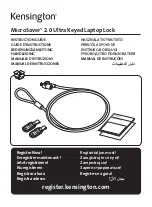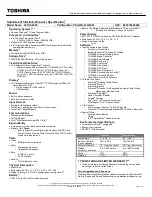
154
Glossary
CPU cache
—A section of very fast memory residing between
the CPU and the computer’s main memory that temporarily
stores data and instructions the CPU will need to execute
commands and programs. See also
cache, L1 cache, L2
cache
.
cursor
—An on-screen symbol (usually a flashing vertical line)
that indicates the position where characters will appear
when you enter data.
D
Desktop
—Offers the traditional look and feel of the Windows
desktop found in Windows 7 and earlier releases of the
Windows operating system.
default
—The setting selected by a program when the user does
not specify an alternative setting.
device
—A component attached to the computer. Devices may
be external (outside the computer’s case) or internal (inside
the computer’s case). Printers, disk drives, and modems are
examples of devices.
device driver
—A program (called a “driver”) that permits a
computer to communicate with a device.
dialog box
—An on-screen window displayed by the operating
system or a program giving a direction or requesting input
from the user.
Direct Current (DC)
—The type of power usually supplied by
batteries. DC flows in one direction. Compare
Alternating
Current (AC)
.
Direct Memory Access (DMA)
—A dedicated channel,
bypassing the CPU, that enables direct data transfer
between memory and a device.
directory
—See
folder
.
disable
—To turn a computer option off. See also
enable
.
disc
—A round, flat piece of material, designed to be read from
and written to by optical (laser) technology, and used in the
production of optical discs, such as CDs and DVDs.
Compare
disk
.















































